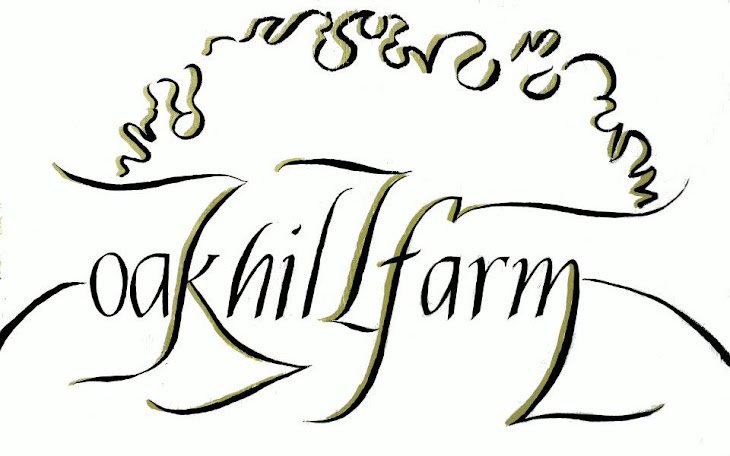 |
| From top left: kale, garlic, beets, carrots, lettuce (two varieties -- Black Seeded Simpson and Butter Crunch), turnip greens, and pac choi. Enjoy! |
Week 3 has arrived!
It's that time again! Scroll down for a list of all the veggies in your box this week and some suggestions on how to use them.Hog-sized thanks are in order.
Thanks to all our shareholders for your flexibility this week in picking up your vegetables on a Tuesday instead of at your normal times. We're excited about traveling to our friends' wedding this weekend... but we're sorry it interfered with the normal veggie pick-up.Thanks, too, to our friends Rodney and Terese. They came out to camp on Monday night (complete with campfire and guitar circle) -- and then stayed to help us harvest, wash, and pack the veggie boxes on Tuesday. I'm not sure we could have packed all 11 boxes in a single morning without the extra hands! Many hands made for light work, and many laughs made for light-hearted work.
The Balance of Farm Life
We even had time for a farm-fresh breakfast on the front porch -- eggs from our chickens; bacon from our beloved kneecap-biting former buddy Kevin Bacon; homemade biscuits (with Kevin Bacon's lard), home-made fig jelly, milk gravy, and a glorious champagne cheese provided by Terese. We know how to balance hard work with reaping the rewards :).This Week's Bounty
This week we have for your munching pleasure:- Kale: These greens are wonderful in a simple saute -- start with a clove of our chopped fresh garlic and a little chopped onion sauteing in a splash of olive oil on medium-high heat. Add the kale (cut out any large stems), stir, and allow to cook down. As it starts to wilt, add in a little water (or vegetable stock for more flavor), cover, and turn down to medium heat. Cook to taste; some people like it with a little crunch left, some cook 'til its thoroughly wilted.
- Garlic: This will probably be our last week of fresh garlic -- you may have one more after we harvest, as we allow the heads to hang and cure. You'll notice that the heads aren't as clean as in previous weeks. As the garlic gets close to maturity, it's important to leave all the outer layers attached to help it last as long as possible. In past weeks I've stripped that outer skin to create a "prettier" garlic, but at this age it's time to start leaving the papery shell on the outside.
- Beets: We hope you all enjoy beets as much as we do; we have a bumper crop this year! We like them best roasted in the oven (without peeling the skins) to bring out the natural sweetness. These aren't your mama's vinegary pickled beets :).
- Carrots: You'll notice that some of our carrots aren't as "perfect" as the grocery store variety -- but these are normal for a home-grown crop. The wonderfully spiced flavor of fresh carrots was one of the most eye-opening experiences of growing my own food in the first year... it's still one of my favorite flavors. You can also use the tops as part of a salad (use sparingly as they can be bitter), as an alternative to parsley (they're in the same family), or to make carrot top tea. The tea is a diuretic and carminative that's good for gout, kidney and liver support, gas, and bloating.
- Lettuce: This is the last week of the lettuce season. With the onset of hot weather, lettuce grows tall and leggy (bolts) and turns bitter. You'll notice that the flavor is stronger this week than it's been in the past -- by next week they'll be inedible. You have two varieties this week: butter crunch, which just matured, and the black seeded simpson you'll recognize from previous weeks.
- Turnip greens: We planted these between two rows of cabbage as an experimental crop. It's rare to see turnips planted this time of year, but they help hold water in the surrounding soil and may turn out to be a nice companion plant for us. This variety is bred to emphasize greens over actual turnips, so you'll find plenty of greens but only tiny 'roots' instead of big turnips. The experiment was a rousing success for the early season (almost no weeds in that section, and nice wet soil without watering), but they've begun to crowd the surrounding cabbage so we've now pulled them for your munching pleasure.
- Pac Choi: Your friendly neighborhood pac choi is back. This is the first year we've grown it, and I think it's my new favorite vegetable. We should have pac choi for at least one more week if all goes well; it's reported to be heat tolerant and it's looking big and healthy.
